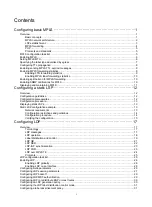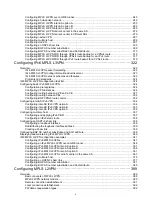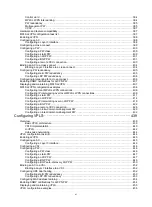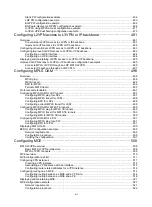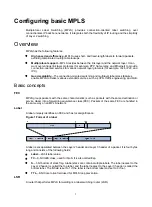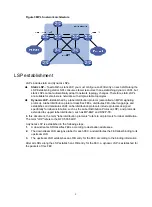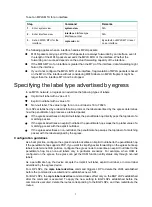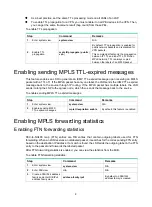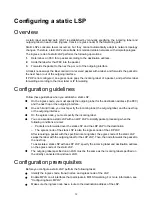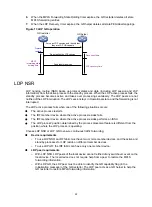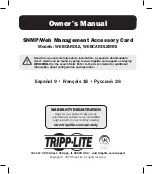
7
To set an MPLS MTU for an interface:
Step Command
Remarks
1.
Enter system view.
system-view
N/A
2.
Enter interface view.
interface
interface-type
interface-number
N/A
3.
Set an MPLS MTU for the
interface.
mpls mtu
size
By default, no MPLS MTU is set
on an interface.
The following applies when an interface handles MPLS packets:
•
MPLS packets carrying L2VPN or IPv6 packets are always forwarded by an interface, even if
the length of the MPLS packets exceeds the MPLS MTU of the interface. Whether the
forwarding can succeed depends on the actual forwarding capacity of the interface.
•
If the MPLS MTU of an interface is greater than the MTU of the interface, data forwarding might
fail on the interface.
•
If you do not configure the MPLS MTU of an interface, fragmentation of MPLS packets is based
on the MTU of the interface without considering MPLS labels. An MPLS fragment might be
larger than the interface MTU and be dropped.
Specifying the label type advertised by egress
In an MPLS network, an egress can advertise the following types of labels:
•
Implicit null label with a value of 3.
•
Explicit null label with a value of 0.
•
Non-null label. The value range for a non-null label is 16 to 79023.
For LSPs established by a label distribution protocol, the label advertised by the egress determines
how the penultimate hop processes a labeled packet.
•
If the egress advertises an implicit null label, the penultimate hop directly pops the top label of a
matching packet.
•
If the egress advertises an explicit null label, the penultimate hop swaps the top label value of a
matching packet with the explicit null label.
•
If the egress advertises a non-null label, the penultimate hop swaps the top label of a matching
packet with the label assigned by the egress.
Configuration guidelines
As a best practice, configure the egress node to advertise an implicit null label to the penultimate hop
if the penultimate hop supports PHP. If you want to simplify packet forwarding on the egress but keep
labels to determine QoS policies, configure the egress node to advertise an explicit null label to the
penultimate hop. Use non-null labels only in particular scenarios. For example, when OAM is
configured on the egress, the egress can get the OAM function entity status only through non-null
labels.
As a penultimate hop, the device accepts the implicit null label, explicit null label, or normal label
advertised by the egress device.
For LDP LSPs, the
mpls label advertise
command triggers LDP to delete the LSPs established
before the command is executed and re-establishes new LSPs.
For BGP LSPs, the
mpls label advertise
command takes effect only on the BGP LSPs established
after the command is executed. To apply the new setting to BGP LSPs established before the
command is executed, delete the routes corresponding to the BGP LSPs, and then redistribute the
routes.

